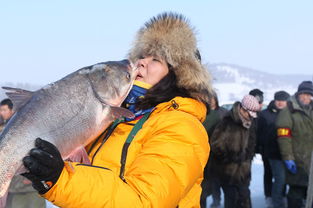Content:
Sea fishing is an exhilarating and rewarding activity that offers a unique connection with nature. However, encountering periods of 'no bites' can be frustrating for even the most seasoned anglers. Whether you're a beginner or a seasoned pro, overcoming this common challenge requires a blend of patience, knowledge, and strategic adjustments. In this article, we will delve into various tips and techniques to help you improve your chances of catching fish when the bite seems to be elusive.
Understand the Fish Behavior
Before diving into the specifics of fishing techniques, it's crucial to understand the behavior of the fish you're targeting. Different species have varying feeding patterns, preferences, and habitats. By familiarizing yourself with these factors, you can tailor your approach accordingly.

- Seasonal Patterns: Fish behavior can change significantly with the seasons. For instance, during the summer, fish might move deeper into the water to escape the heat, while in the winter, they may be more active near the surface.
- Tide and Weather: Pay attention to the tide charts and weather forecasts. Fish are more likely to feed during certain phases of the tide, and calm weather conditions often lead to better catches.
- Water Temperature: Fish are highly sensitive to water temperature. Adjust your bait and lure selection based on the water temperature in your area.
Choose the Right Bait and Lure
The choice of bait and lure can make a significant difference in your fishing success. Experiment with different options to see what works best in your specific environment.
- Natural Bait: Live bait like shrimp, minnows, or squid can be highly effective. However, they require more preparation and can be less appealing in certain conditions.
- Artificial Lures: Artificial lures like jigs, spoons, and spinners can mimic the movement of natural prey and attract fish. Choose lures that match the size and color of the fish you're targeting.
- Color and Shape: Bright colors and unique shapes can be more visible to fish. However, it's essential to balance this with the natural prey that the fish in your area typically eats.
Adjust Your Presentation
The way you present your bait or lure can greatly impact your chances of catching fish. Here are some key presentation techniques:
- Rigging: Ensure your rig is properly set up. The wrong rig can lead to lost fish or a tangled line. Experiment with different rigging methods to find what works best for your target species.
- Retrieve Speed: Vary your retrieve speed based on the fish's behavior. Some species may be more attracted to a slow, steady retrieve, while others might respond better to a fast, erratic motion.
- Depth: Adjust the depth at which you fish based on the water conditions and the species you're targeting. Sometimes, dropping your bait deeper or shallower can trigger a bite.
Use the Right Equipment
Quality equipment can make a significant difference in your fishing experience. Here are some essential pieces of equipment to consider:
- Reel: Choose a reel that matches the strength and size of the fish you're targeting. A good quality reel can help you handle larger fish and prevent line breakage.
- Rod: The right rod can provide better sensitivity and control. Look for a rod that matches the weight and action of the lure you plan to use.
- Line: Use a line that is strong enough to handle the fish you're targeting without being too heavy, as this can spook the fish.
Be Patient and Observant
Patience is a virtue in sea fishing. Even when you're not catching fish, observe your surroundings and be ready to adapt. Look for signs of fish activity, such as surface disturbances or bird activity. Sometimes, simply waiting a bit longer can pay off.
Learn from Others
Joining a fishing club or attending fishing workshops can provide valuable insights and tips from experienced anglers. Learning from others' experiences can help you avoid common pitfalls and improve your fishing skills.
In conclusion, overcoming 'no bites' in sea fishing requires a combination of knowledge, skill, and adaptability. By understanding fish behavior, choosing the right bait and equipment, adjusting your presentation, and maintaining patience, you can increase your chances of catching fish even during challenging conditions. Remember, the key to successful sea fishing lies in the pursuit of the perfect blend of these elements. Happy fishing!












